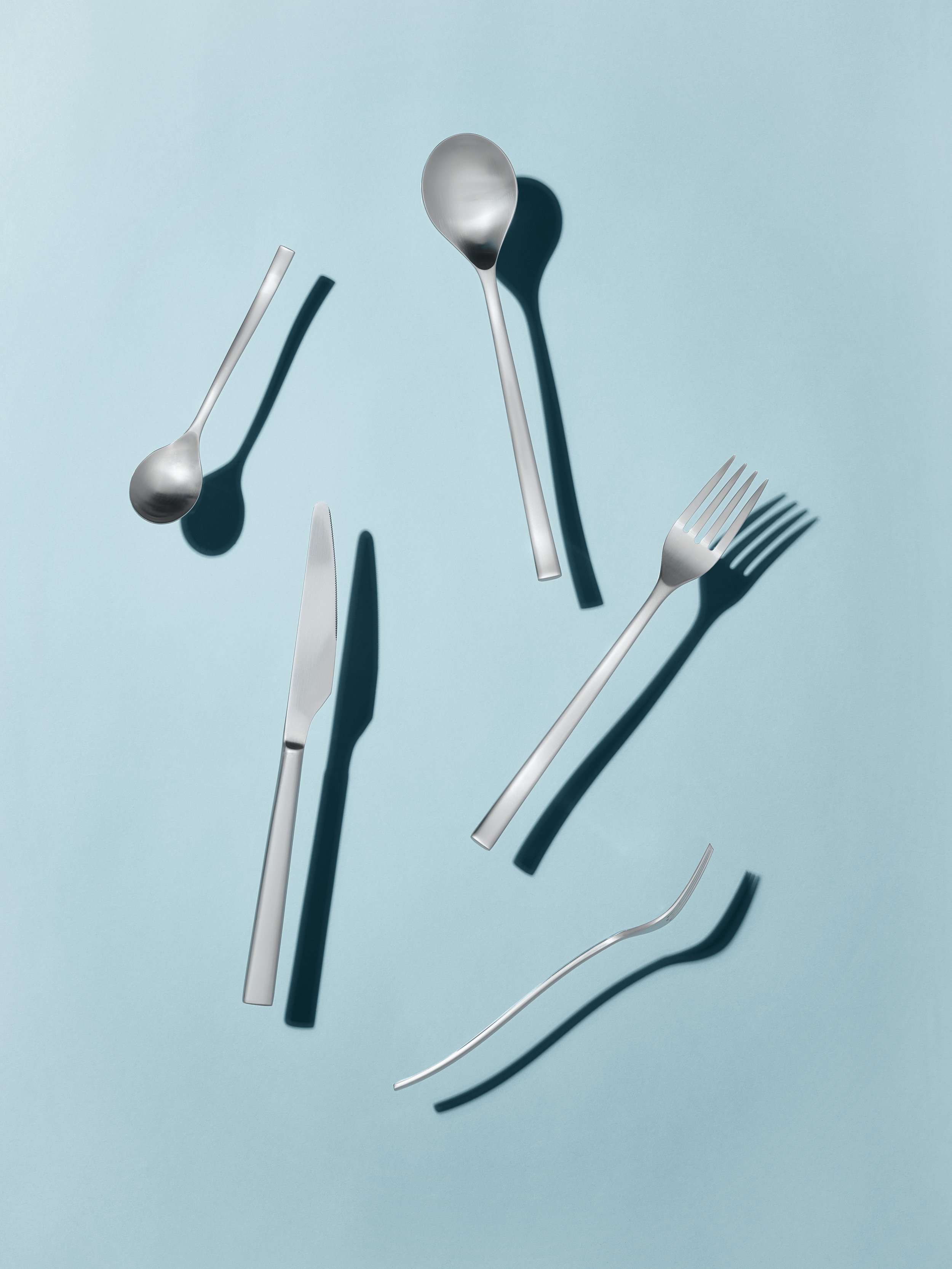A Quiet Cut
Monoware’s cutlery (image: Fabian Frinzel).
When Daniel Baer received his new set of cutlery, created for the design brand Monoware that he launched in 2020, it took some getting used to. “We switched all the old cutlery out straight away, but it was quite a few days before the new ones felt normal,” he explains. “We’d had the previous set for 10 years and your hands get used to the specific weight and shape.”
This, of course, is no criticism of the new cutlery. Developed by London-based designer Felix de Pass, the Monoware design is lovely – elegant, informal cutlery that avoids both fussiness and gimmickry. The forks and spoons have handles that bow through shallow S-shaped curves, offering a soft flick of stainless steel that sits light and poised in the hand. The knife’s fuller handle, meanwhile, has a flattened top that lets your thumb apply comfortable pressure to the blade as it cuts. “We were searching for the balance between having character and setting a tone, but not overcooking it,” says de Pass. “In cutlery, you don’t want something too loud.”
But even quiet cutlery requires acclimatisation: these are objects that are hard to put into words. The Monoware knife, for example, feels right, but explaining why is fiddly. “There’s a transition from the end, which is tear shaped, into something more oval in cross section,” says de Pass, before trailing off – technical description pales compared to physical experience. “It’s just kind of the right weight and balance that feels good in the hand,” he offers as an alternative explanation. In cutlery, it’s ultimately the hand that knows whether something works or not.
This notion lies at the core of Baer’s experience with the cutlery. “Something we talked about a lot during the development,” Baer notes, “was the idea of traditional Japanese hand tools.” Cutlery has to sit easily in the hand and perform a clear function – with time, its specific weight and dimensions should become familiar and natural. “Hand tools are a good reference because, like cutlery, they have a contrast between the area you hold and the head,” de Pass adds. “The handle has requirements of ergonomics, length, balance and feel, which is a complete contrast to the other end, which is interacting with food and your mouth. The transitional area between those two areas became a focus for us.”
In the Monoware cutlery, this point of transition between handle and head manifests as a tear-drop hollow, where light pools before spilling onto the stainless steel when the implement moves. Although the collection’s knife is formed from a bar of steel, its spoons and forks are produced from flat sheet metal that is variously stamped, rolled and pressed into three-dimensional form. It is this transition from two-dimensional shape to three-dimensional tool that lies at the root of the collection, and which makes the cutlery difficult to parse in any form other than day-to-day use. “It’s intuitive,” Baer notes, with de Pass going on to make the same point even more directly: “There’s nothing like having it in your hands.”
Words Oli Stratford
Photographs Fabian Frinzel
This article was originally published in Disegno #35. To buy the issue, or subscribe to the journal, please visit the online shop.

